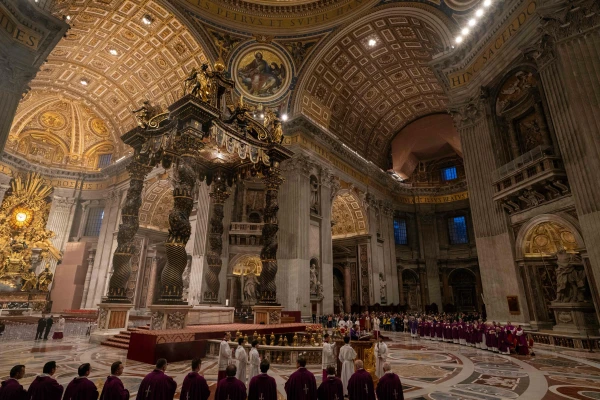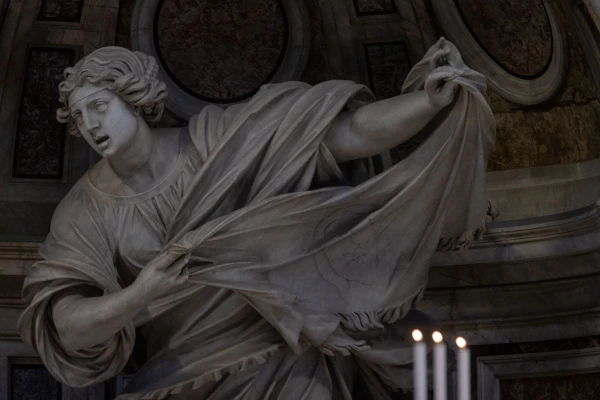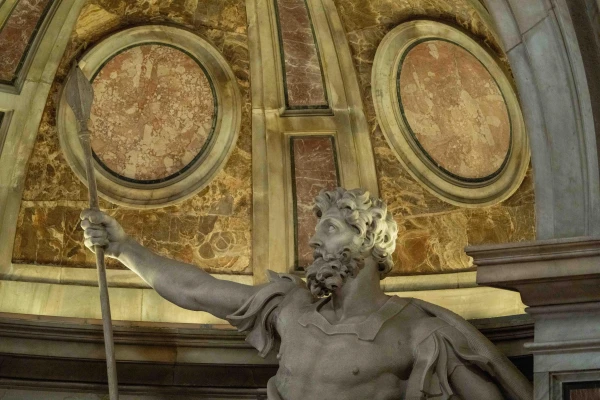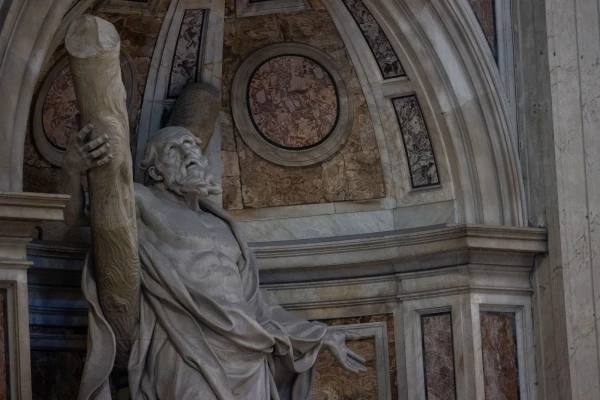On April 6, corresponding to the fifth Sunday of Lent, the traditional exposure of the Verónica veil was held for the veneration of the faithful in the Basilica of San Pedro in Rome, renewing a rite of an ancient tradition of the Catholic Church.
This relic, also known as the Holy Faz, is the cloth with which, according to tradition, Santa Verónica would have risen the face of Christ during his path to Golgotha.
Receive the main news of ACI Press by WhatsApp and Telegram
It is increasingly difficult to see Catholic news on social networks. Subscribe to our free channels today:
Although the figure of Verónica does not appear in the canonical gospels, its history has been transmitted since the seventh century and gained great popularity in the fifteenth century.
There are multiple veils attributed to Verónica worldwide, the most prominent being preserved in the Basilica of San Pedro in Rome and in the sanctuary of the Holy Faz in Manoppello, in the Italian region of the Abruzos. The latter was acquired by the Capuchin monastery in 1638. The authenticity of these relics has been subject to debate, although the presence of the veil in Rome has been documented since the beginning of the eleventh century.
However, in addition to the Verónica veil, the Basilica of San Pedro houses other relics of great importance, linked to the passion of Christ, sheltered in the four pillars that support their majestic dome, designed by Miguel Ángel.

Each of these pillars contains a niche with the statue of a saint and an associated relic:
The Pilar de Santa Verónica, represented by the statue of the Holy, the work of Francesco Mochi, houses the aforementioned cloth.

Instead, the Santa Elena pillar protects a fragment from Vera Cruz, the cross in which Jesus was crucified. Santa Elena, mother of Emperor Constantine, is known for having discovered the cross in Jerusalem. The statue of the Holy is in the Pilar, made by the Italian artist Andrea Bolgi, while holding a cross, symbolizing his finding.
On the other hand, the Pilar de San Longinos, contains the relic of the tip of the sacred spear, with which, according to tradition, the Roman centurion Longinos crossed the side of Christ on the cross.
The statue that is in the third pillar holding the dome represents shows the soldier in an attitude of conversion and was sculpted by Gian Lorenzo Bernini between 1628 and 1638.

The fourth pilar called San Andrés keeps a curious story. Originally it housed the skull of San Andrés, brother of San Pedro and one of the twelve apostles. The statue of San Andrés, the work of the flamenco sculptor, François Duquesnoy, represents with the cross -shaped cross in which he was martyred. This work was commissioned by the Urban Pope VIII. However, in September 1964, Pope Paul VI returned this relic to the city of Patras, in Greece, as a gesture of friendship towards the Orthodox Church.


